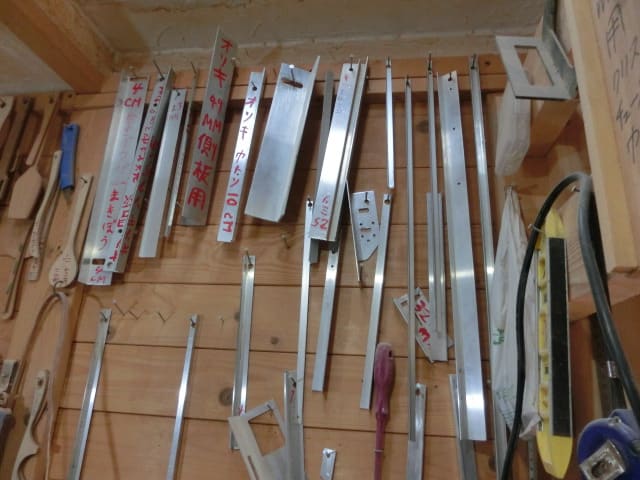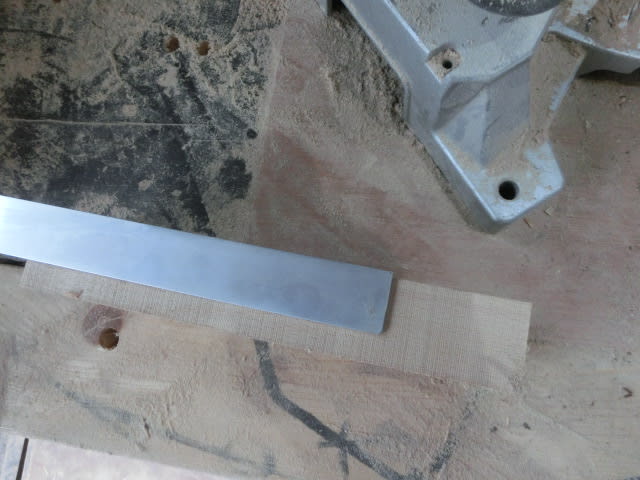
These are the jigs that I use for many different purposes, such as width, depth, thickness, of up to a few centimeters. When you want to make 20, 30 of the same thing you cannot afford to use normal measuring devices each time you want to draw pencil lines.
Instead, one of these is placed over the block of wood and you simply draw a line along the straight edge of the jig.
For instance, see below. An L angled metal is placed on top of a block.

Similarly, you can put a shape jig over an L angle jig and find out the practical thickness of a spoon's lateral profile. See below.

With this one, now matter how you jiggle with the shape profile it is too large for the plate block you can cut out from this L angle jig. This is how you can discover the minimum thickness of an S shaped spoon jig.
"Minimum", because you do not waste your materials. In the case of the first picture above you can only get one plate block, if the spoon thickness is equal to the L angle width. Ideally, you want at least two plate blocks out of a larger block.
On the other hand, the L angle jig below is just about right.

Having decided that you can get two plate blocks from a single larger block you must cut the thing down the middle. To that end you need auxiliary lines. In almost all cases you need two parallel lines like below.

Given that these lines are very close to each other it is easy to cut along the imaginary line between them.
Today, I made 6 new curry spoons, with 6 plate blocks from 3 larger ones.

During the course of this I had to change the shape of the lateral profile jig. Old and new jigs can be seen together here below.

Slightly less bending so that the new one fits within the desired limit. What follows is the result.


I am happy with this new lateral jig. I remember from long time ago that somebody wrote somewhere that spoons bending should not be too large. I think it is true, for a few reasons.









